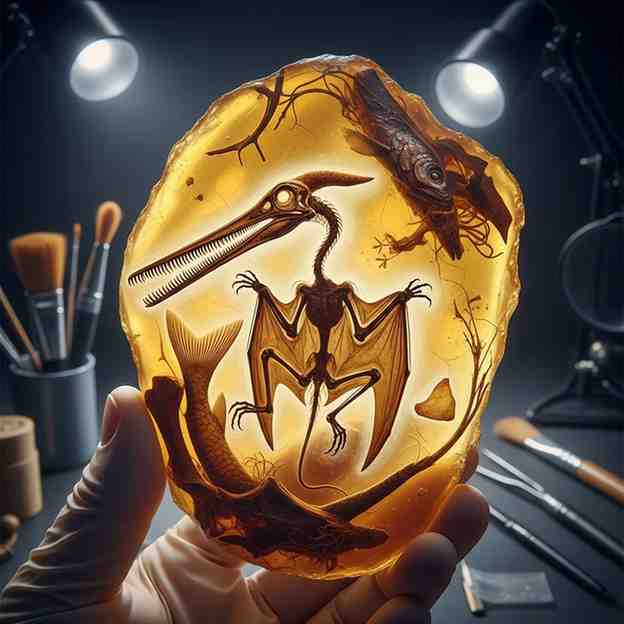
New Flying Reptile Species Found Inside Fossilised Dinosaur Vomit
A remarkable discovery from Brazil has revealed a new species of flying reptile , preserved not in sediment layers but inside fossilised dinosaur vomit —a rare form of fossil known as regurgitalite . The finding provides exceptional insights into predator–prey relationships and pterosaur diversity during the Cretaceous period, especially within tropical ecosystems.
Regurgitated Fossils Reveal Hidden Species
The specimen was discovered in the collections of the Museu Câmara Cascudo in Brazil, where it had been stored for years before detailed examination. The regurgitalite contained the bones of two individuals of a newly named filter-feeding pterosaur species, Bakiribu waridza , along with four fossilised fish. The fragmented bones and absence of soft tissues indicate that the remains had passed partway through a predator’s digestive tract before being expelled.
A New Tropical Filter-Feeding Pterosaur
Bakiribu waridza belonged to the Ctenochasmatidae family, known for their elongated jaws and dense, comb-like dental structures adapted for filter feeding. Though broadly similar to the well-known South American pterosaur Pterodaustro , the new species shows distinct differences in tooth size, spacing and jaw morphology—revealing unexpected diversity in tropical pterosaur communities.
Evidence of Cretaceous Predator–Prey Behaviour
The mixture of pterosaur and fish remains suggests the predator first consumed Bakiribu waridza and subsequently ingested fish before vomiting the combined mass due to digestive stress or obstruction. Likely candidates include spinosaurid dinosaurs , known for their piscivorous diet, or large ornithoceriform pterosaurs inhabiting the same region.
Exam Oriented Facts
-
New species identified: Bakiribu waridza .
-
Fossil type: Regurgitalite from Museu Câmara Cascudo, Brazil.
-
Family: Ctenochasmatidae , known for filter-feeding adaptations.
-
Likely predator: Spinosaurids or large pterosaurs from the same ecosystem.
Month: Current Affairs - November 17, 2025
Category: Palaeontology, Cretaceous Ecosystem